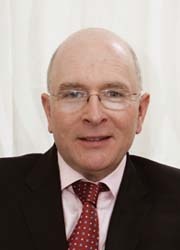MANAGEMENT
Presented and organised by ECR 2009 and European Hospital
More for less: Driving up performance in acute care

Niall Dickson, CEO of The King’s Fund in London since 2004, is a former editor of Therapy Weekly and of the Nursing Times. He has also been Health Correspondent, then Chief Social Affairs Correspondent and then Social Affairs Editor for the British Broadcasting Corporation (BBC). He is also a member of the Cabinet Office Honours Committee (Health) and ministerial advisory group on social care funding and the NHS National Stakeholder Forum. In 2008 he chaired a cross-party commission on accountability in health for the Local Government Association (LGA). Additionally, Niall is an honorary Fellow of the Royal College of Physicians and of the Royal College of General Practitioners.
‘Public spending on health and long-term care is a major source of fiscal pressure in most OECD countries, amounting to, on average, some 9% of GDP in 2006, and reaching as much 15% in the US. Spending growth at the rate it has been seen in the last 10 years in most countries is unsustainable.
‘There is no doubt that growing economic pressures will limit growth in healthcare funding. At the same time governments will face sustained demand for investment driven by rising public expectations. While the World Health Organisation report of the Commission on the Social Determinants of Health reported that healthcare built on the principle of universal coverage is important, healthcare systems across Europe are under pressure. A sustained economic downturn may result in a move towards a ‘safety net’ of provision only. In any event, the increasing pressure on healthcare resources in the face of growth in demand and in capacity to treat is likely to drive a tighter definition of benefits packages.
‘Aging populations and lifestyle behaviours, in particular, dramatic rises in adult and child obesity will drive demand and the rapid introduction of technological and medical advances will also play a part in increasing healthcare costs.
‘What is the answer? In short, doing more for less. A seminal review in the UK concluded that while significant increases in funding had delivered notable improvements – more staff and equipment; improved infrastructure; significantly reduced waiting times and better access to care, there were not concurrent increases in productivity.
‘Efficiency and productivity will have to join quality as driving forces, savings need to be achieved not by the traditional methods of freezing posts, delaying care and cutting back on ‘administration’ but by genuine redesign of services and setting clear priorities. Providers and commissioners of healthcare must ensure they have the leaders in place who can deliver value by ensuring that even as money becomes tighter, care improves. This task is not impossible – poorly designed services ultimately waste money. As Don Berwick of the Institute of Healthcare Improvement in the US states clearly that ‘higher quality costs less’. Technological and medical advance are allowing more care options in more places. Electronic patient records and the miniaturisation of diagnostics, frees clinicians and patients from hospital buildings, and offers the potential for more patient focused services.
‘The onus now is on local healthcare managers and clinicians to create a shared vision for their health services ensuring that the right incentives are in place to get them there, despite the stormy financial waters ahead.
01.03.2009






